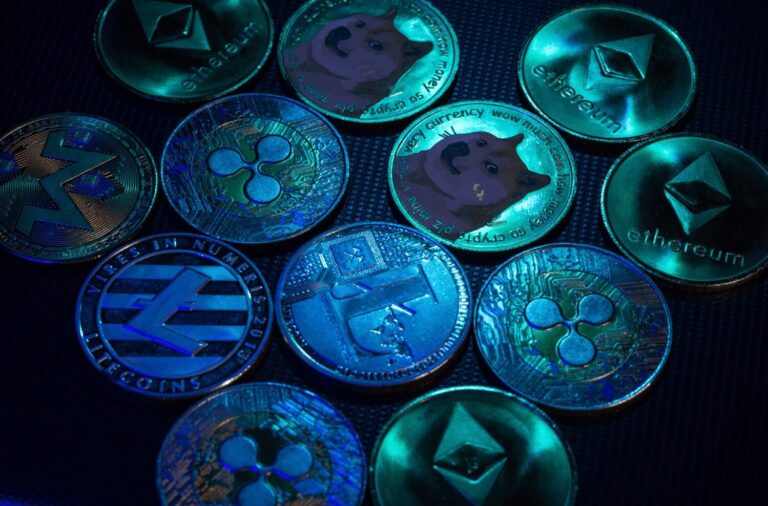
In times of financial turbulence, the traditional markets often respond with panic — steep sell-offs, surging volatility, and widespread uncertainty. Yet the world of crypto tends to tell a different story. While not immune to fear, the digital asset space shows a kind of emotional resilience that sets it apart. And this isn’t just about investor enthusiasm or media-driven hype — it’s a structural feature baked into the DNA of the crypto ecosystem.
Recent global shocks have made this contrast even more apparent. For instance, during the so-called “Liberation Day” sell-off on April 2 — when former U.S. President Donald Trump floated broad tariffs on global trade — Wall Street’s nerves were rattled. CNN’s Stock Fear & Greed Index plunged from 19 to a rock-bottom 3, marking an 80% drop. Meanwhile, the Crypto Fear & Greed Index, though it declined, dropped from 44 to 18 — a fall of about 59%. In other words, while crypto investors definitely felt the heat, they didn’t retreat nearly as far as their counterparts in traditional finance.
Part of this divergence lies in how sentiment is measured. Traditional indicators rely on signals like market breadth, volatility indexes (like the VIX), and bond demand. Crypto, on the other hand, looks at social sentiment, trading volume, and price momentum. Even with these differences, both indexes aim to measure the same thing: investor emotion.
But emotion behaves differently in crypto.
Conditioning Through Chaos
One of the key reasons crypto investors appear more resilient is the environment they’ve grown up in. The crypto space is volatile by nature — double-digit daily swings are part of the terrain. A 20% drawdown in equities usually means panic; in crypto, it might not even register as a full-blown correction. Over time, this has hardened the average crypto investor’s expectations and responses.
Let’s not forget the May 2022 episode when the U.S. Federal Reserve raised interest rates, triggering widespread recession fears. Around the same time, the collapse of LUNA and UST sent shockwaves through the crypto industry. Still, the Stock Fear & Greed Index fell by 82%, while the Crypto counterpart dropped 62%. Even though crypto bore the brunt of the crisis — with bankruptcies and liquidations — investor sentiment held stronger than expected.
Why? Because belief in the long game is a core part of crypto culture.
Two Types of Investors, One Resilient Ecosystem
Crypto’s emotional durability is anchored by its community. On one side are the true believers — long-term holders who see assets like Bitcoin as more than just tradeable tokens. They view it as a store of value, an ideological hedge against fiat systems, and a long-term financial revolution. For them, price swings are noise — distractions from a much bigger mission.
Then there’s the other group: short-term participants, often newer to the space, more reactive to news cycles, and quick to exit in the face of uncertainty. These investors are more sensitive to fear, and their behavior can increase volatility in the short term. However, in networks like Bitcoin, where long-term holders control over 65% of supply, their influence is often limited to temporary price turbulence.
Built-In Optimism with Real Foundations
What truly fuels crypto’s structural optimism isn’t blind faith — it’s conviction grounded in evidence. Take Bitcoin as an example: it operates on a capped supply, transparent issuance model, and growing global adoption. These are not just theories but demonstrated principles that have weathered more than a decade of regulatory threats, macro shifts, and technological challenges.
Actions speak even louder than narratives. While financial media focused on tariff fears this past spring, long-term Bitcoin holders quietly accumulated over 300,000 BTC, showing unshaken belief. Market liquidity improved, with 1% depth climbing to $500 million by the end of Q1, reinforcing investor confidence.
Moreover, broader macro indicators support this optimism. Global liquidity remains strong, and several Bitcoin cycle metrics — such as the Pi Cycle Top — suggest there’s still room for further upside. These factors reinforce the idea that while crypto may shake during crises, it rarely breaks.
Looking Ahead
Crypto’s optimism isn’t some fragile bubble. It’s a deeply embedded feature — shaped by volatility, sustained by innovation, and protected by a culture that prioritizes long-term thinking. While institutional involvement has started to blur the emotional distinction between crypto and traditional markets, the digital asset space still retains its edge in psychological endurance.
As history has shown time and again, when uncertainty looms, crypto tends not to crumble — it adapts. And that makes all the difference.




